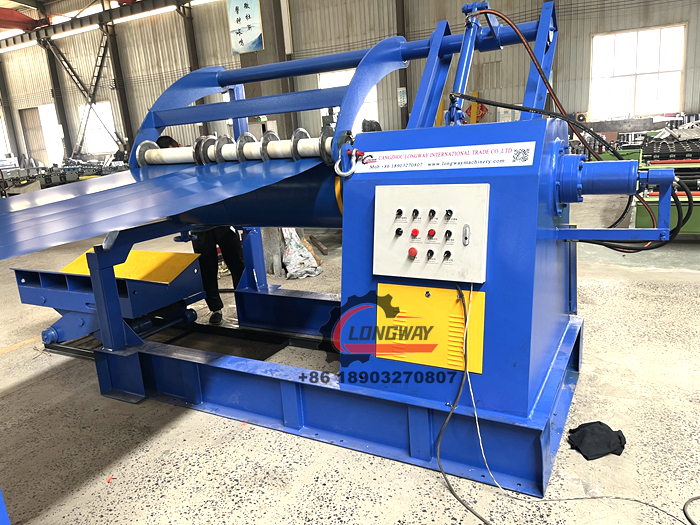Roofing Sheet Production Equipment for Manufacturers in the Construction Industry
The Role of Machines in Roofing Sheet Manufacturing
In the ever-evolving construction industry, roofing materials play a critical role in ensuring the longevity and stability of buildings. Among these materials, roofing sheets—particularly metal sheets—have gained immense popularity due to their durability, lightweight nature, and aesthetic appeal. The efficacy of roofing sheet manufacturing relies heavily on advanced machinery that streamlines the production process, improves quality, and optimizes resource use. This article delves into the significance of machines for roofing sheet manufacturers and their impact on efficiency, sustainability, and innovation.
Understanding Roofing Sheets
Roofing sheets are essential materials used in the covering of rooftops. They come in various materials such as galvanized steel, aluminum, and PVC, serving different purposes depending on the architectural requirements and environmental conditions. Roofing sheets enhance a building's insulation, contributing to energy efficiency and resilience against weather elements.
The Importance of Machinery in Manufacturing
Manufacturers of roofing sheets require specialized machinery to produce high-quality products that meet industry standards. These machines perform critical functions, including cutting, bending, and forming materials into desired shapes. The types of machinery utilized in roofing sheet manufacturing include roll-forming machines, shearing machines, and punching machines, each designed for specific processes in production.
1. Roll-Forming Machines These are at the heart of roofing sheet production. Roll-forming machines shape metal coils into continuous profiles, which can be customized in terms of thickness and design. The precision of these machines not only reduces waste but also ensures that the finished sheets fit perfectly during installation. Advanced roll-forming technology now allows manufacturers to produce a wide variety of profiles efficiently, expanding their market reach.
2. Shearing Machines After forming, sheets need to be cut to specific lengths. Shearing machines provide clean edges and precise cuts, which are crucial for the overall appearance and performance of the roofing sheets. Modern shearing technology can cater to various thicknesses and materials, ensuring versatility in production.
3. Punching Machines To facilitate installation, roofing sheets often require holes for screws, fasteners, or drainage. Punching machines automate this process, ensuring that each sheet is equipped with the necessary holes at accurate intervals. This automation not only enhances productivity but also minimizes human error, leading to higher quality outcomes.
machine for roofing sheet manufacturers

Enhancing Efficiency and Reducing Waste
The integration of robotics and automation in roofing sheet manufacturing plays a pivotal role in boosting efficiency. Manufacturers can now monitor production processes in real-time, optimize operations, and reduce downtimes. Automated systems can perform complex tasks, manage workflows, and even predict maintenance needs, ensuring a smooth production line.
Moreover, modern machinery is designed with sustainability in mind. By minimizing material waste during the production process and using energy-efficient systems, manufacturers can significantly reduce their environmental footprints. This focus on sustainability appeals to a growing number of environmentally conscious consumers and businesses, positioning manufacturers as responsible players in the industry.
Future Trends in Roofing Sheet Manufacturing
As technology continues to advance, the roofing sheet manufacturing industry is poised for innovation. Emerging trends such as smart manufacturing, artificial intelligence, and advanced materials will further revolutionize the production process. For instance, the use of AI can aid in predictive analysis, enabling manufacturers to better anticipate market demands and adjust production schedules accordingly.
Additionally, advancements in materials, such as eco-friendly and energy-efficient options, are likely to shape the future landscape of roofing sheets. Manufacturers that invest in cutting-edge machinery to produce these innovative materials will be well-positioned to lead in the competitive market.
Conclusion
The role of machines in roofing sheet manufacturing is indispensable. With the right technology, manufacturers can enhance efficiency, reduce waste, and ensure high-quality products that meet evolving consumer demands. As the industry continues to innovate, embracing modern machinery will be vital for manufacturers aiming to maintain a competitive edge in the market. In the world of construction, the importance of roofing sheet production cannot be underestimated, and investing in advanced machinery is a step towards a more sustainable and efficient future.
-
Roof Panel Machines: Buying Guide, Types, and PricingNewsJul.04, 2025
-
Purlin Machines: Types, Features, and Pricing GuideNewsJul.04, 2025
-
Metal Embossing Machines: Types, Applications, and Buying GuideNewsJul.04, 2025
-
Gutter Machines: Features, Types, and Cost BreakdownNewsJul.04, 2025
-
Cut to Length Line: Overview, Equipment, and Buying GuideNewsJul.04, 2025
-
Auto Stacker: Features, Applications, and Cost BreakdownNewsJul.04, 2025
-
Top Drywall Profile Machine Models for SaleNewsJun.05, 2025








